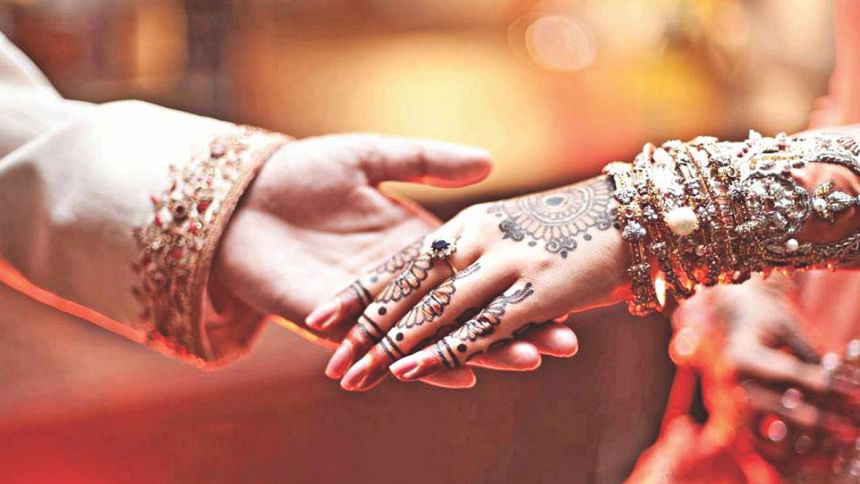Consanguineous marriage - Yes or No?

Charles Darwin, Albert Einstein, Franklin Roosevelt, Saddam Hussein, Queen Victoria, King Phillip II of Spain, Satyajit Ray- people from different religions, upbringings, eras, vocations and regions of the world. But surprisingly, they had one thing in common- they had all married their cousins.
Consanguineous marriage refers to marriage between closely related people, especially between first or second cousins. While the practice of marrying one's cousin was and is prevalent in societies, it has always been subject to debate and social stigma. While most western countries, as well as Bangladesh, Pakistan, India, do allow cousin marriage, it is banned in Taiwan, North and South Korea, Philippines, China, and 24 out of the 50 US sates. Worldwide, more than 10 percent of marriages are between first or second cousins.
Different religions have different views and reservations on marriage between cousins. And different cultures and societies also vary in their opinions regarding this issue. Religious, cultural, and societal perspectives cannot be used as parameters to term consanguineous marriage as good or bad and adjudge it fit to be encouraged or not. But, there is one universal 'language' that may just help us to give a definite answer to this highly controversial issue, and that is genetics!
As much as people may hate on biology, let us be honest, this field of science gives us strong, discrete and proven answers to many queries regarding our lifestyle.
Biology (genetics, to be precise), clearly discourages such unions, because children born to parents who are closely related, such as first or second cousins, are more likely to have genetic diseases or disorders.
This is because cousins have more chances of passing on the recessive genes of certain genetic diseases like cystic fibrosis or sickle cell anaemia to their offspring than non-related parents. Cousins share similar genetic elements, and if one member of the family is carrier of a certain genetic disease, odds are, other members, especially cousins, may also be latent carriers. And when two carriers mate, chances of the offspring being born with that disease is significantly higher.
All these biological terms and aspects may be hard to comprehend for the general population who are not affiliated much with biology. So, let us enlighten you all on some basic facts of genes and heredity to make things more relatable to you.
Genes are responsible for all the traits a particular individual possesses, and half of the genes in your body come from your father, and the other half come from your mother. Thus, genes for each trait occur in pairs- one pair from the father and the other from the mother. Out of the two, one of the genes is more expressive than the other, i.e. it is dominant over the other, and thus, it overshadows the other. So, this is the dominant gene and the other is the recessive gene. Let us take eye colour as an example. The gene for brown eye colour (denoted by B) is dominant over the gene of blue eye colour (denoted by b). So, a person having 'BB' or 'Bb' will have brown eye colour. Only when a person has 'bb' will he/she have blue eyes.
Sickle cell anaemia is a genetic disease that is characterised by anaemia, fatigue, swelling and inflammation of hands and feet, leg ulcers, etc. and caused by a recessive gene. The main reason behind this disease is sickle shaped red blood cells, which greatly reduce the efficiency and ability of red blood cells to transport oxygen to body tissues. For simplicity, let us assume the gene (dominant) that codes for normal red blood cell is A. And the recessive form of this gene, a, codes for sickle shaped red blood cell. So, a person having AA will of course have normal blood cells. A person having Aa will also have normal red blood cells. But this person is said to be a carrier of sickle cell anaemia. So, if this carrier marries another carrier of the disease, the offspring will have higher probability of being born with the disease; 25 percent to be precise.
So, this is where marrying your cousin poses a major threat for your to-be born child. Since cousins have the same genetic roots, if one is a carrier of a genetic disease, other cousins also have chances of being carriers.
Studies show that a child has double the risk of being born with a genetic disorder if the parents are related than a child being born to non-related parents.
But this just does not mean that children will never have a genetic disease if parents are not cousins. Each and every couple has the risk of giving birth to a child who may have genetic diseases. But the bottom line here is that marrying cousins and having children with them just INCREASES the chance of a child being born with some genetic anomaly.
So, if you do want to tie the knot with your relative, the wisest step is talk to a genetic counsellor, and undergo gene screening to see if you are carrier of any hereditary disease. This will help grant you both a happy married life and lovely healthy kids.
Photo: Collected

 For all latest news, follow The Daily Star's Google News channel.
For all latest news, follow The Daily Star's Google News channel. 



Comments